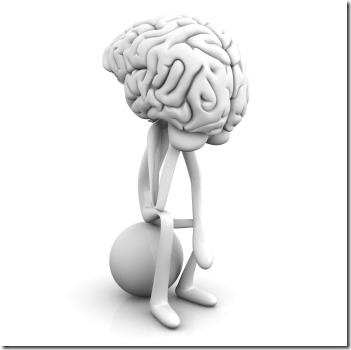The latest round of buzz about AI (Artificial Intelligence), particularly the new meme Machine Learning, has triggered many talks on its applications in trading and investing. It is very interesting how it suddenly becomes the latest holy grail in trading. Is it really that much better? Not necessary.
What AI is Good at
AI is very good at picking up patterns from large amount of data based on the framework we have provided them. It also gives AI the advantage to find patterns that human often miss since we are born to identify visual anomalies only. In other words, AI can assist us to uncover useful information from large amount of data. From the game of chess or online games, to industrial design of cars and equipment, AI helps us resolve many difficult problems in much faster and efficient manner comparing to human based discovery approach.
When I use the word “pattern” above, it is not limited to visual or statistics based patterns. It can be patterns of rules that govern a dynamic system. For example, the machine learning process may discover that certain set of rules are failing to produce the expected results, and that they all belongs to the same category of underlying patterns in the data.
By applying this meta logical pattern on the rules, AI can develop new rules itself. This is the technological direction, namely self reprogramming and self refinement, that Elon Musk is so worried about. Think about an AI based program deployed to defend a country that has built-in self management rules to improve itself. What if one day the system produced a new rule that it is better to launch all the missiles to guarantee winning a war, or chose to delete a rule that emphasize on minimizing the casualties of civilians?
AI in Trading
AI has been applied to trading ever since it was introduced many years ago. The earlier approaches are mainly developed to capture patterns in price and related financial data (e.g. PE ratio) to make forecast on individual stock and markets. Later on we have seen successful trading models built for short term trading on indices using patterns recognized from large amount of data including price patterns and market breadth data. The concept behind the development of these models, however, are still very human centric. We were using AI to discover patterns and then we apply the patterns in our trading. In short, we decide what discoveries made by the computer are applied in our trading.
The latest round of AI application in trading, however, is taking on a different direction. Many professional traders and trading firms are now testing fully automated trading models that are managing themselves. What I mean is that human factor is reduced down to the initial feeding of data into the computer with an overall theme specification and subsequent risk management only. In short, we are teaching the computer to trade by themselves instead of teaching human to do the job because we prefer traders to have little or no emotion at all for better performance.
The advantage of these new approach to AI based trading does not stop there. Models will continue to evolve on their own, either in live or simulation environment (which human still have control). This helps proprietary trading firms tremendously with much better control over the consistency in performance.
Context Matters
It is obvious that AI is best fit for trading in short term environment as the amount of data to be processed can be too much for human to analyze. It is also clear that the AI models that self manage can pick up subtle changes in the data much faster than human can. This ability to teach itself to adapt to a changing environment can be a double-edged sword though.
For a changing environment, say, a news driven shock to the markets, can be very short term. Given enough historical examples feed to the AI systems, they will figure out a way to handle these situations. The catch is, however, that certain longer term environment change never repeats themselves, yet they produced all the major characteristic changes that affect the markets for years. As there is never enough historical data on these situations, AI cannot really learn from them nor can they incorporate safety measures to safe guard themselves properly when such tide turning events happen in the future.
In other words, the adaptive AI based trading systems are doing exactly opposite of what many classic (and successful) trading models do. Instead of exploiting one specific bias to extract profit from the market with money management strategies to protect the profits like the classic trading models, the new self learning AI systems keep tuning themselves to outsmart the markets. This approach is not that different from what we called routine re-optimization of deployed trading models. Since we do not know if the set of parameters we use on a trading model would perform best in the future, by optimizing the models based on a subset of the historical data, usually the most recent part, on a regular basis, it gives us a way to tune the model to better fit the current trading environment. The self learning AI systems basically does that themselves.
Human Factor Still Key to Success
Hence, it is important more than ever that the trainer / designer of an AI system to understand the various potential drivers in a market. There are things the AI system would never be able to learn or to adapt to. There are things the AI system should never adapt to. The boundaries necessary to make the AI system safe to trade have to be provided by human.
Seriously, everyone can train their generic AI toolbox to deploy trading models to trade real money. In fact, I am sure every model deployed has a pretty darn good historical performance. But, it is not how good a system perform that matters. As the old saying goes, “If you avoid the losers, the winners take care of themselves”. It is how the system react to adverse situations and not losing too much money in the process that really counts. Only those designers who are well aware of defensive money management principles would do this correctly right from the beginning.
The bottom line is clear – it is still the person behind the machine based trader that matters most.
KISS Still Shines
“Keep It Simple, Stupid!” believe it or not, still holds true even in this heavily bots populated trading environment.
As I explained many times over the years, with more bots trading, the markets evolved into something much more predictable in a very sarcastic sense. Yes, older style of trading no longer produces good performance. And yes again, many trading methods are neutralized by the existence of bots. However, new patterns emerges from the very existence of these bots because they all behave in a very similar way. AI systems are no different. Given the technology are all based on similar toolbox, and that the obvious patterns are picked up by the AI systems one way or another, it is likely the AI systems will all behaviour similarly and go after very similar biases identified by them. In aggregation, they produce consistent footprints just like any other market participants.
So it is not necessary to stay at the forefront of technology or employing the latest trading gadget to make money in the markets. It is your overall approach to the market that matters. KISS still shines in the current trading environment. I know many size traders still focus on a few simple trading setups to make their living. The existence of these smarter AI bots changes the characteristics of many markets in the smallest timeframes only.
A Common Misconception About Day Trading Models
Lots of people spend all their time to discover or fine tuning a strategy so that it trades so many times to give them stellar performance like 300% or even 500% return per year. That may work but it is also dangerous to put all money on such models.
As I explained before in last instalment of this series, it is much better to emulate a good day trader who has multiple trading setups for which each one offers its own independent risk reward profile. It is the combination of these trading setups that produce a balanced approach to trading. With the right combination of these strategies, you get the same spectacular performance with much lower risk of complete melt down in performance like the single strategy approach.
Here is also the main concern with AI based bot traders. Unless you have a way to dissect the trading approach, you do not know the risk profile of each individual decision made by the system. You just know, as a whole, the machine trader you have on hand somehow perform great on the historical data. But we know they their were trained on those data, of course they would perform well on those data. You cannot throw a evolved model back in time to see if they would do well by the same reason.
If you train an AI system with certain part of the historical data, keeping the model not adaptive, it is then just the same old machine assisted discovery method. If you let the system retrain itself from time to time with new data, it is similar to the re-optimization mentioned above with the drawback of not able to gauge the historical performance. I think you get the point – machine learning is not perfect.
Summary
AI based bot traders are sexy for many reasons but they are far from perfect. If you know nothing about the underlying data and its characteristics, using AI to speed up your research is definitely the future as we are going to amass a lot more data going forward. However, it is not going to do you any good if you are an amateur in trading hoping that you can simply train the machine to do the job for you. Your have to be a good trainer (not necessary good trader) to make your trading bot a good trader.
At this point, it should be quite clear where I stand on the subject. I use AI to assist my research. I also use AI based models to warn me of potential changes in the market dynamics. I like the technology as it saves me time on data mining and other tasks in research. But I do not deploy trading models that are based on AI only. I prefer the KISS approach because I need the transparency and consistency with the models so that they are much easier to manage. It is a matter of personal preference. Maybe I have paranoia on AI just like Musk.

